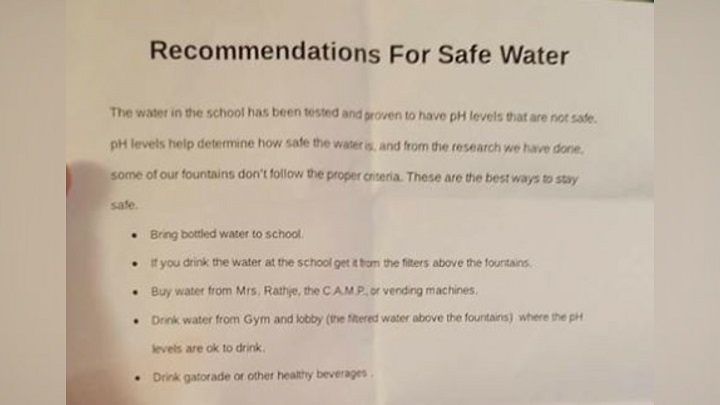Administration addresses flyer citing school’s water is ‘not safe’

NEWBERRY — Administration at the Tahquamenon Area Schools is addressing a flyer citing that the school’s water was found to be unsafe to drink.
According to a letter to parents obtained by ABC 10, chemistry students have been researching how to test water. The students then tested the water in 23 different water fountains in all of the school’s buildings for lead and iron.
The students found questionable water levels in seven of the 23 fountains and presented the results to the superintendent, Stacy Price, on Monday, February 19th. During a phone call with ABC 10, Price said that the students presented conflicting information. She added that she clarified questions and information about water testing procedures, including that there are many different ways to test water, some more effective than others.
Since the students were working in groups, one of the groups was in charge of recommending solutions to unsafe water levels. This group printed the flyer without receiving approval from their instructor or the administration.
The letter to the parents states that “T.A.S. had the water tested in March of 2016 with the elementary, kitchen and high school testing all within normal ranges. The samples were taken by Newberry Water and Light, testing by the Michigan Department of Environmental Quality.”
However, Price said that the seven water fountains have been covered until the state can retest the fountains. The letter also said that “if the tests confirm the concerns, we will promptly shut off the affected fountains to prevent use until the potential problem is addressed. It is [Price’s] intention to be as transparent as possible when it comes to the health and safety of our school community.”
The students found the water fountains in the lobby and in the library hallways to be satisfactory. These fountains remain available to students and faculty.
Price said she is speaking with the class on Thursday. She added that this is a “good learning experience of how the world works” and for the students to observe more specific processes of testing water.
